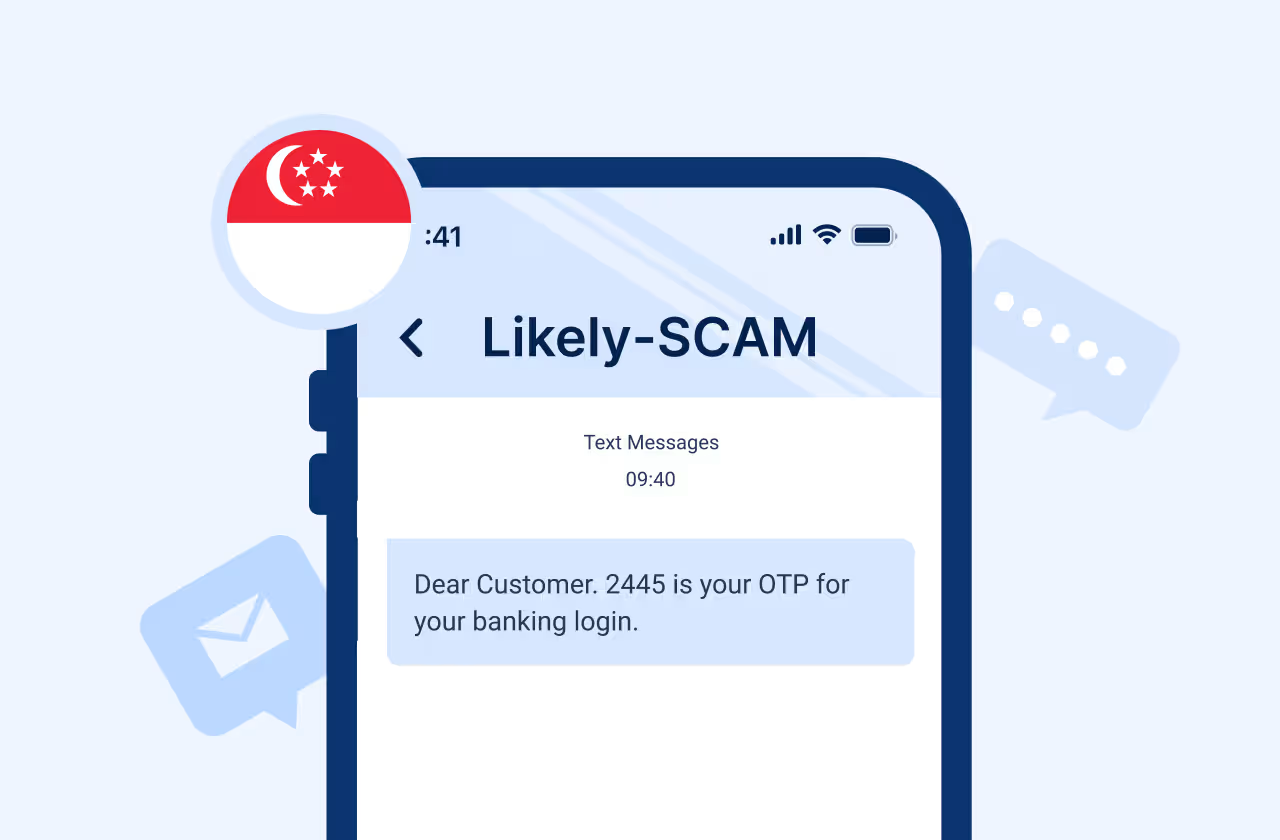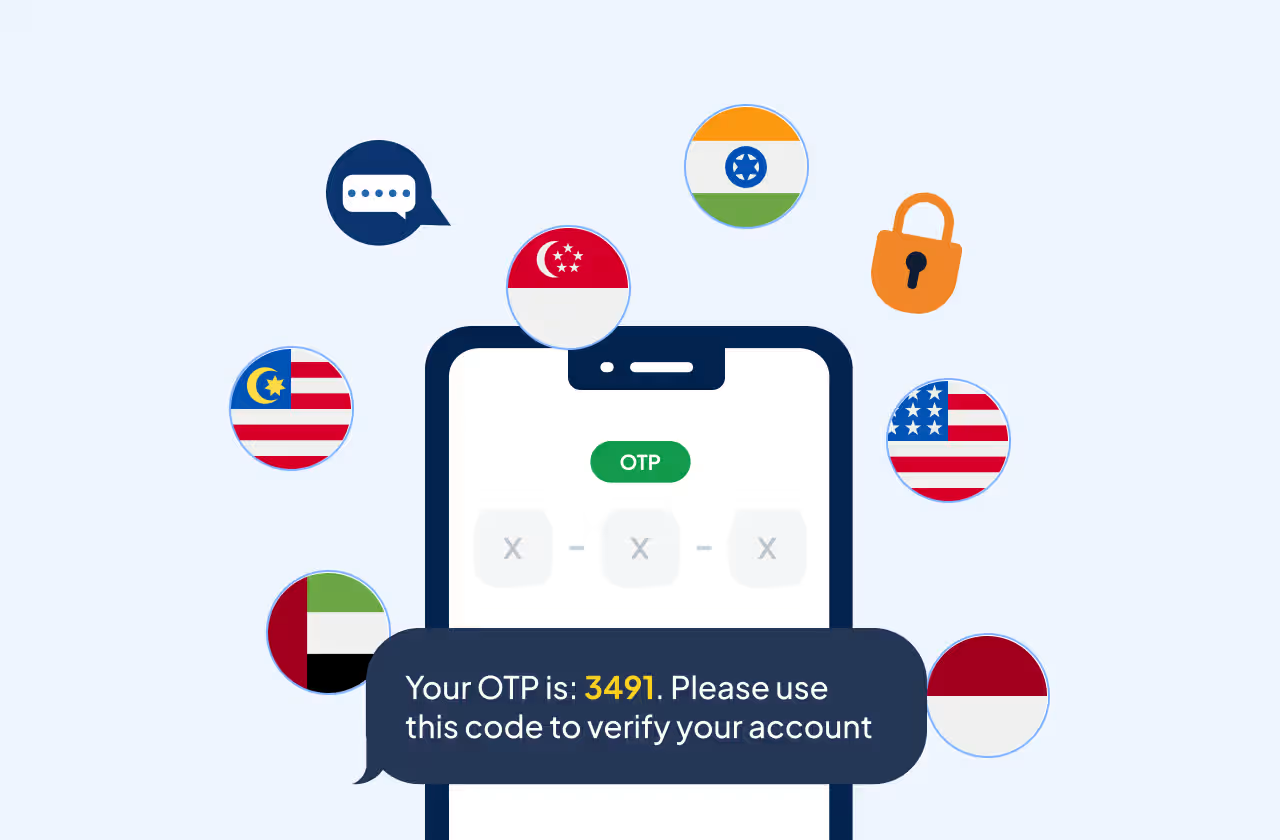Key Takeways
- A2P 10DLC is a standard aiming to reduce spam and improve deliverability of high volume SMS messages in the United States
- 10DLC is different from traditional long codes or shared short codes. This dedicated number supports high volume and throughput
- Regulations around businesses using 10DLC are more stringent ensuring that the objective of reducing spam is fulfilled
- Businesses should get registered with the Campaign Registry and select their campaign type to get started with 10DLC
- There are multiple benefits of 10 DLC including high deliverability, cost effective entry and enhanced trust with engagement
Introduction
Businesses are constantly seeking reliable and efficient ways to communicate with their customers. A2P (Application-to-Person) messaging has emerged as a vital tool in this endeavour, and the introduction of 10 Digit Long Code (10DLC) has significantly enhanced its potential.
A2P 10DLC represents the new standard for businesses sending high-volume SMS in the United States, aimed at improving message deliverability, reducing spam, and maintaining compliance with shifting telecommunications regulations.
What is A2P 10DLC?
A2P 10DLC stands for Application-to-Person messaging using 10-Digit Long Codes, designed specifically for business SMS communications like promotional SMS.
Unlike
- Traditional long codes meant for person-to-person communication or
- Shared short codes used by multiple businesses,
10DLC provides a dedicated number that supports the high volume and throughput needed for commercial messaging. This initiative is a response from carriers to provide a trusted, regulated, and efficient messaging environment.
Technical Aspects of A2P 10DLC
10DLC numbers look like standard phone numbers, making them recognizable and trusted by consumers. They support messaging features like SMS, SMS verification services and MMS and are capable of higher throughput rates compared to traditional long codes.
Carriers have implemented new network infrastructure to support 10DLC, ensuring better delivery rates, lower latency, and improved spam control mechanisms unlike US short codes.
Why the Shift to A2P 10DLC?
The Limitations of Previous Solutions
Before 10DLC, businesses predominantly used
- Shared short codes,
- Dedicated short codes, or
- Standard long codes for bulk messaging.
Each method had its drawbacks, from the high cost of dedicated short codes to the spam risks and carrier scrutiny associated with shared short codes. Standard long codes were not designed for high-volume messaging, leading to deliverability and reliability issues for SMS campaigns.
For businesses, the move towards individualized long codes represents a significant improvement, particularly as regulations around privacy and anti-spam have become more stringent.
With the previous use of shared short codes, businesses had to share key commands, such as those for opting in and out. This setup meant that if one company misused the shared short code by sending inappropriate or excessive messages, any customer opting out using standard commands like STOP, QUIT, or CANCEL would opt-out from communications from all companies using that code. More critically, legitimate businesses risked having their messaging services suspended by carriers if another user of the shared code violated usage policies. This move to 10DLC provides a dedicated pathway for each business, enhancing control and reducing the risk of collateral damage from the actions of others.
Carrier and Regulatory Initiatives
Carriers, in collaboration with industry stakeholders, developed the 10DLC system to address these challenges. It's part of a broader effort to improve the messaging ecosystem's health, ensuring that businesses can reliably reach customers while protecting consumers from unwanted spam and scams.
The Registration Process
1. Campaign Registry
To use 10DLC, businesses must register their messaging campaign with The Campaign Registry, an entity that works with U.S. carriers to manage 10DLC numbers.
The registration process involves providing detailed information about the business, the messaging campaign for SMS marketing, and expected volume. Carriers use this information to assign a trust score and approve the campaign, which affects message throughput rates and deliverability.
In this process, your brand is also registered. Your information should match with your EIN listing (for US businesses).
2. Choosing the Right Campaign Type
Different types of messaging campaigns have different requirements and costs.
For example, standard campaigns might include mixed or marketing content, while low-volume or starter campaigns are available for smaller businesses with lesser messaging needs. Special use cases like emergency services or political campaigning are also categorized differently, each with its own set of rules and approvals.
3. Campaign Vetted and Numbers Associated
After brand and campaign creation, the carriers manually review all the details to validate. This may take up to 25 days.
You can then provide the list of numbers to be registered to your registered campaign.
Benefits of A2P 10DLC

1. Enhanced Trust and Engagement
With a recognizable 10-digit number, customers are more likely to trust and engage with messages. This trust is crucial for businesses looking to build long-term relationships and improve customer response rates for your text blasts.
2. Higher Throughput and Deliverability
10DLC supports higher message throughput, meaning businesses can send messages faster and with greater volume. Improved deliverability ensures that messages reach customers reliably, essential for time-sensitive or critical communications.
3. Cost-Effective Entry
While offering many of the benefits of dedicated short codes, 10DLC is more accessible and cost-effective, making it an attractive option for a wide range of businesses, from small startups to large enterprises.
Implementing A2P 10DLC
1. Internal Assessment and Planning
Businesses should begin by assessing their messaging needs, understanding the different types of 10DLC campaigns, and planning their registration. This involves reviewing current messaging practices, volume, and content types. This is similar to what businesses have to do with DLT registration in India.
2. Partnering with Messaging Service Providers
Many businesses will benefit from partnering with authorized messaging service providers who can navigate the technical and regulatory complexities of 10DLC. These providers can handle registration, manage compliance, optimize messaging strategies, and offer insights into performance and best practices. SMS API providers like Message Central can help with the process.
3. Ongoing Compliance and Monitoring
Once a 10DLC campaign is live, businesses must continuously monitor for compliance with carrier policies and regulatory changes. This involves managing opt-in and opt-out mechanisms, content restrictions, and responding to any carrier or customer feedback.
Compliance and Best Practices
1. Consent and Opt-in
Businesses must obtain explicit consent from customers before sending A2P messages. This involves clear communication about what the customer is signing up for and easy opt-out options in every message.
2. Content Guidelines
Carriers have strict guidelines about acceptable content for A2P 10DLC messaging. Businesses should familiarize themselves with these rules to avoid penalties, message blocking, or lowered trust scores. Prohibited content might include high-risk financial services, SHAFT (sex, hate, alcohol, firearms, and tobacco), and misleading or deceptive messages.
3. Regular Review and Adjustment
The messaging ecosystem and carrier policies are continually evolving. Businesses need to stay informed about changes and be ready to adjust their messaging strategies and compliance processes accordingly.
Challenges and Future Outlook
1. Navigating a Complex Ecosystem
The 10DLC ecosystem involves multiple stakeholders, including businesses, messaging service providers, carriers, and regulatory bodies. Navigating this landscape requires a proactive and informed approach, with a willingness to adapt to new developments and regulations.
2 Balancing Cost, Performance, and Compliance
While 10DLC offers many benefits, businesses need to carefully balance the costs of registration and messaging fees, the performance benefits of higher throughput and deliverability, and the ongoing need for compliance. Understanding the total cost of ownership and potential ROI is crucial.
3. Technological Advancements and Integration
As technology advances, so do the capabilities and applications of A2P 10DLC. Businesses should look out for new features, integration capabilities with other communication platforms, and opportunities to leverage 10DLC in innovative ways.
Conclusion
A2P 10DLC represents a new era in business messaging, offering a path to more reliable, efficient, and compliant communications.
As businesses navigate the transition to this new standard, they must understand the technical, regulatory, and strategic implications.
By embracing 10DLC, businesses can unlock new opportunities for customer engagement, streamline operations, and ensure a trusted and effective communication channel in the digital age. The journey toward fully leveraging A2P 10DLC might be complex, but the benefits of improved deliverability, customer trust, and regulatory compliance make it an essential strategy for any business looking to thrive in today's mobile-first world.










